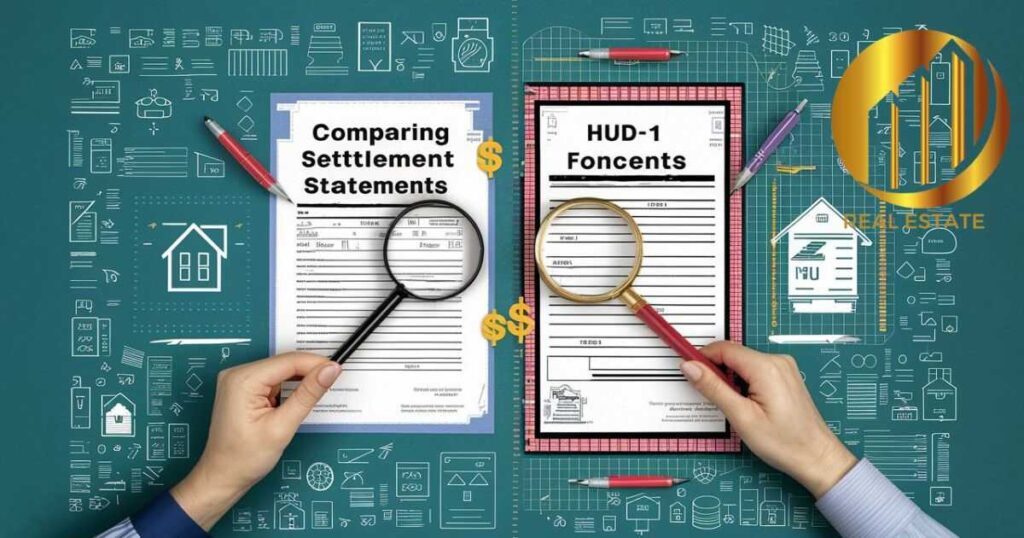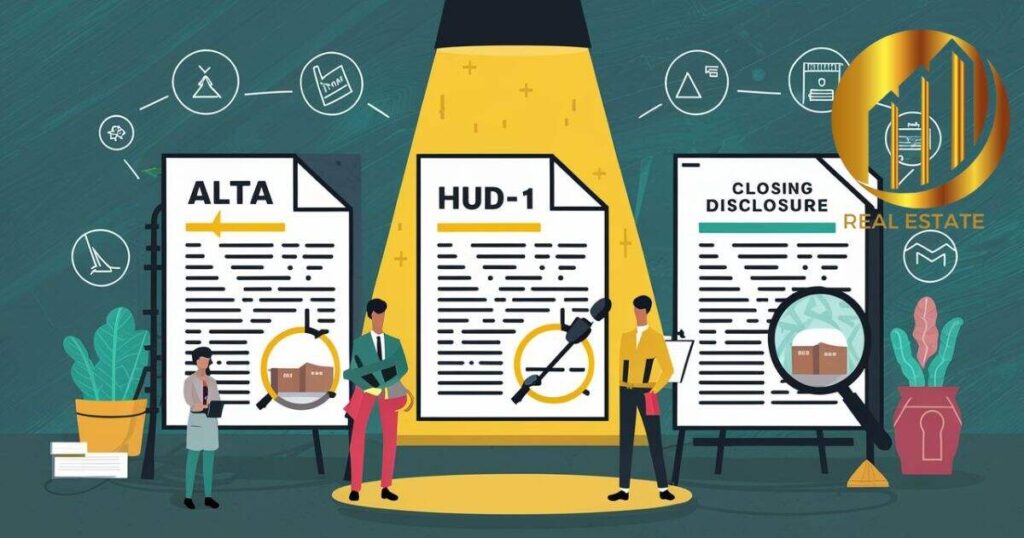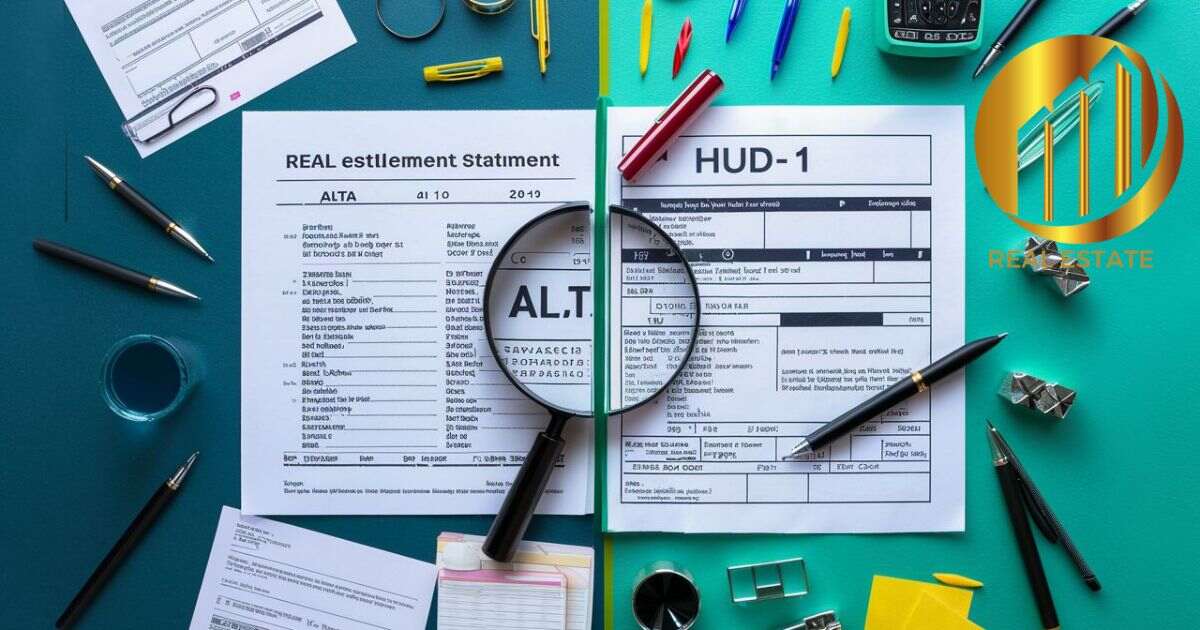ALTA coverage is used in commercial transactions such as providing detailed information to parties, lawsuits, property insurance, etc. In other words, HUD information is used in residential negotiations by federal regulations and summarizes financial transactions such as loan amounts and closing costs
Are you considering comparing both? Unpack the complexities of real estate by comparing ALTA and HUD-1 rental data. Explore the extensive insights that ALTA provides on trade deals.
Where HUD-1 focuses on residential negotiations and the costs of closing loan terms, it incorporates title insurance and regulatory issues. Understanding how these essential documents are interpreted can help you better understand property transactions. In this article, we read about various aspects of the Alta Settlement Vs Hud Statement.
Differences Between ALTA Settlement Statement And HUD

| Aspect | ALTA Settlement Statement | HUD-1 Settlement Statement |
| Issuing Organization | American Land Title Association (ALTA) | Department of Housing and Urban Development (HUD) -Replaced by Closing Disclosure |
| Purpose | Standardized document for conveying property transaction details | Previously used for detailing financial aspects of real estate transactions, it was replaced by Closing Disclosure |
| Content | Comprehensive breakdown of costs, fees, and financial transactions | Detailed breakdown of buyer’s and seller’s charges, loan details, and closing costs |
| Regulatory Status | Voluntary industry-standard | Previously mandated by HUD, it is now replaced by the Closing Disclosure |
| Current Usage | Widely used in the industry | Replaced by the Closing Disclosure, but some references may still be found in historical transactions |
How to Read the ALTA Settlement Statement?
When delving into the ALTA Settlement Statement, start by checking the property details and transaction dates in the header. Look closely at the breakdown of costs and fees. Keeping track of what the buyer and seller are responsible for. Pay attention to credits and debits, as they impact the overall transaction. Explore the lender’s section for loan-related info.
Lastly, review the bottom lines to grasp the total amounts due for both parties. You may enjoy a thorough understanding of the financial aspects of the real estate transaction by taking the time to comprehend each area. If things get confusing, feel free to reach out to real estate professionals for some extra guidance.
ALTA & HUD Timelines of Terms and What This Means?

In the realm of real estate understanding the timelines in ALTA (American Land Title Association) and HUD (Department of Housing and Urban Development) documents is like having a roadmap for a property journey. ALTA provides a clear structure by outlining significant dates, such as the start and end of the contract.
Unlike the HUD-1 settlement, it has been replaced by a closing. Which was formerly utilized to list the dates of loan approval, inspections, and the final closing. This schedule serves as a guide from offer approval to deal seal. Understanding this timing is comparable to following a well-planned schedule for a fruitful real estate tour.
What is the Method of the Real Estate Settlement Procedure Act?
RESPA enhances consumer awareness of settlement costs. And aims to minimize closing expenses by prohibiting referral fees and kickbacks in real estate transactions. One of its key methods is to ensure that homebuyers receive important and timely information about real estate settlement costs and transactions. Lenders are required by RESPA to furnish borrowers with a standard Good Faith Estimate (GFE) that details expected loan conditions and closing fees.
Real Estate School in RESPA is like the superhero of fair deals in real estate. It puts its foot down against sneaky moves like kickbacks and referral fees among the folks handling settlement services. This way, it’s all about transparency and giving you, the consumer, the upper hand. RESPA is saying, “Let’s make the real estate game fair, clear, and competitive”.
What is a Closing Disclosure and Why Do I Need it with an ALTA Statement?

Comparable to a home loan’s final report card is a closing disclosure. It’s a document that you receive from the bank before receiving your mortgage. This paper lays out all the nitty-gritty details like the interest rate monthly payments and closing costs. This is your final opportunity to fully understand what you’re getting into before committing.
An ALTA Statement, on the other hand, is essentially a larger document. It lists every expense related to purchasing or selling a home, including title insurance and property taxes. Together, these documents ensure that, at the time of closing on a house, all parties are treated fairly and in full.
The Sections in the ALTA Settlement Statement
The ALTA Settlement Statement is like the financial roadmap for buying or selling a home. And it’s divided into key sections that spell out all the details. One part talks about the property itself, giving the lowdown on things like where it is and its legal details. This helps make sure everyone is on the same page about which property is changing hands.
Credit issues are highlighted in another important area, including acceptable rates, interest rates, and terms. It’s like the user manual for the money side of things. Altogether, these sections in the ALTA Settlement Statement make sure everyone knows exactly what’s happening and that it’s all fair and square in the real estate game.
How Many Different ALTA Settlement Statements Are There?
There is often only one ALTA Settlement Statement used by all parties in the real estate industry. It sounds like standard phrasing that all financial data will be disclosed at a property’s closing. This standard form, made available by the American Land US Association (ALTA) offers everyone involved uniformity and clarity. It resembles a contract between lenders, sellers, and purchasers.
But remember, even though everyone uses the same ALTA Settlement Statement form in real estate deals, the actual numbers and details can change. But bear in mind that although the structure stays the same. Figures and specifics may change depending on the terms of each contract and any unique state laws. The story might take on a life of its own when the cards are set.
Standard ALTA Settlement Statement
This is the go-to form that everyone uses for real estate deals, providing a common template for sharing financial details.
Combined ALTA Settlement Statement
If you want a one-stop shop for both buyers and sellers, this version wraps up all the important info in a single document, making things simpler.
ALTA Settlement Statement Seller
Sellers get their version, zooming in on what matters to them closing costs, and how much they’ll walk away with after the deal.
ALTA Settlement Statement Borrower/Buyer
Buyers have their dedicated form too, breaking down what they need to know about closing costs and the estimated loan payments they’re signing up for.
What are the Advantages of an ALTA Statement Over a HUD-1 or Closing Disclosure?

The ALTA Settlement Statement is like a superhero compared to a HUD-1 or Closing Disclosure in real estate. It’s like this all-in-one tool that works for different types of property deals whether it’s your home sweet home or a commercial space. Unlike the HUD-1. Which was a bit one-dimensional and mainly for residential gigs, the ALTA Statement is versatile, making it a better fit for the varied world of real estate.
Plus, it’s like a financial wizard way clearer and more detailed than the simplified Closing Disclosure. It breaks down costs like a pro, making sure everyone knows exactly where every penny is going, bringing a whole new level of fairness and transparency to the table.
Is a Settlement Statement From an ALTA Needed?
Using an ALTA Settlement Statement isn’t always a strict rule in real estate. But it’s like the preferred tool of the trade. It’s the go-to document for many in the industry title companies, escrow folks, and lenders. Because it lays out all the money stuff in a clear and standard way.
Even though specific states or agreements might have their preferences, the ALTA Statement is kind of like the universally accepted cool kid in the real estate closing world. It just makes everything clearer and more transparent, ensuring that everyone involved knows exactly what’s going on with the finances in a property deal.
How Much Will You Get Paid Each Month?

Your monthly earnings depend on various factors such as employment type and compensation structure. Salaried individuals typically receive a fixed amount. While those with hourly wages may experience fluctuations based on hours worked. For self-employed individuals, income can vary. Your net income is affected by deductions for insurance, taxes, and retirement contributions.
Effective management of your monthly profits requires regular budget assessment in line with financial objectives. Your monthly income may vary based on a variety of compensation arrangements. Such as commissions, hourly pay, fixed salaries, or income linked to performance. It’s essential to comprehend the parameters of your compensation plan for stability and financial planning.
What is the Difference Between TRID and RESPA?
RESPA and TRID are like rulebooks for fair play in the world of real estate costs. RESPA, around since 1974, is all about making sure there’s no shady business in settlement services. It insists on clear disclosures and puts a stop to kickbacks and sketchy deals among real estate pros.
Now TRID born in 2015, is like a cool upgrade. It merges parts of RESPA and the Truth in Lending Act to simplify the mortgage closing process. It’s all about making things clearer for us, the homeowners, with two main disclosures. The Loan Estimate and the Closing Disclosure add a bit of extra protection and understanding to the mortgage game.
FAQ’s
Did Alta Replace HUD 1?
ALTA did not change the HUD-1. The completion replaced the HUD-1 for most rental properties.
Who Provides The ALTA Statement?
Title and escrow companies typically provide the ALTA Settlement Statement in real estate transactions.
Are There Different Types Of ALTA Statements?
Yes, there are different types of ALTA Settlement Statements tailored for various aspects of real estate transactions, including combined, seller-focused, buyer-specific, and cash transaction versions.
Is ALTA Offered With A Cash Flow?
Yes, ALTA repair quotes can be provided at a bargain rate, designed to simplify the terms when there is no mortgage involved.
Conclusion
Anyone involved in real estate transactions should know how to interpret an ALTA claim and a HUD claim. The Alta Settlement Statement offers a thorough understanding of the financial conditions of different real estate transactions. And includes a detailed breakdown of modifications and expenditures. It is a useful instrument for guaranteeing clarity and justice because of its adaptability and transparency.
Contrarily the move from HUD statements to closing disclosures for rental properties has led to a more straightforward process that prioritizes precision and succinctness. A seamless closing process, educated decision-making, and individual empowerment in the real estate process are all fostered by navigating by grasping the subtleties of these elements.











